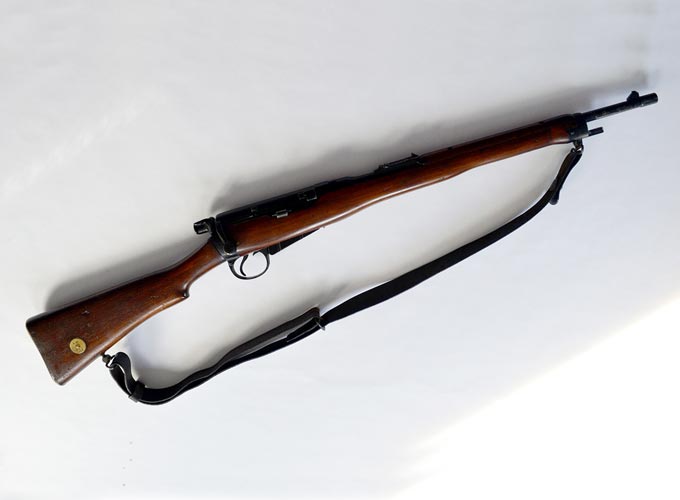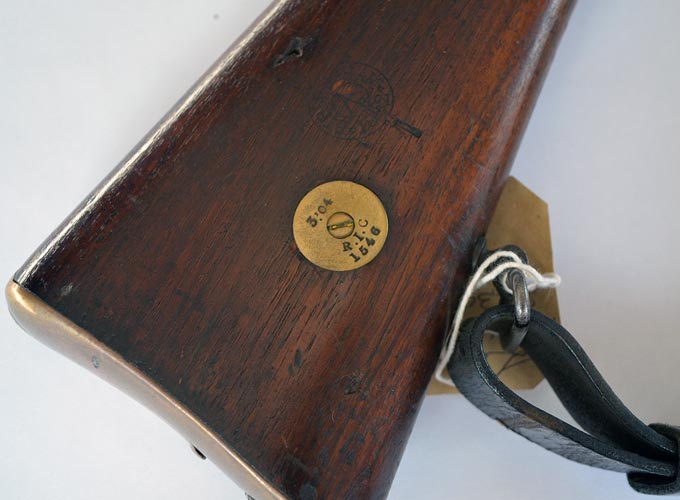Description
This Royal Irish Constabulary (RIC) Lee-Enfield Cavalry Carbine Mark I was produced in Birmingham 1902. Lee-Enfield rifles and carbines were standard issue for the British army between 1895 and 1954, favored for their high powered rifle round capacity, detachable magazine, accuracy and smooth bolt action. The Lee-Enfield Rifle Mk I was adopted by the British army in 1895. After 1902, the Army adopted the shorter and lighter Short Magazine Lee-Enfield and gave 11, 000 surplus Lee-Enfield Carbines to the RIC between 1904 and 1914. These surplus weapons were converted to RIC Carbines and were used by the force between 1904 and 1920.
Carbines and rifles were standard police issue for men and all members had to undergo firearms practice once a year. The RIC did not carry firearms on ordinary patrol. Rifles and carbines were stored in racks in the barracks and were only removed for parades, guards of honour, patrolling disturbed districts or preserving the peace at public gatherings. In 1919, the War of Independence began with the murder of two RIC men on special patrol. Stationed in isolated barracks and on daily foot patrols, the men were vulnerable to attack from the Irish Republican Army. The increased threat against RIC men lead to the withdrawal of foot patrols and the full time arming of the men.



